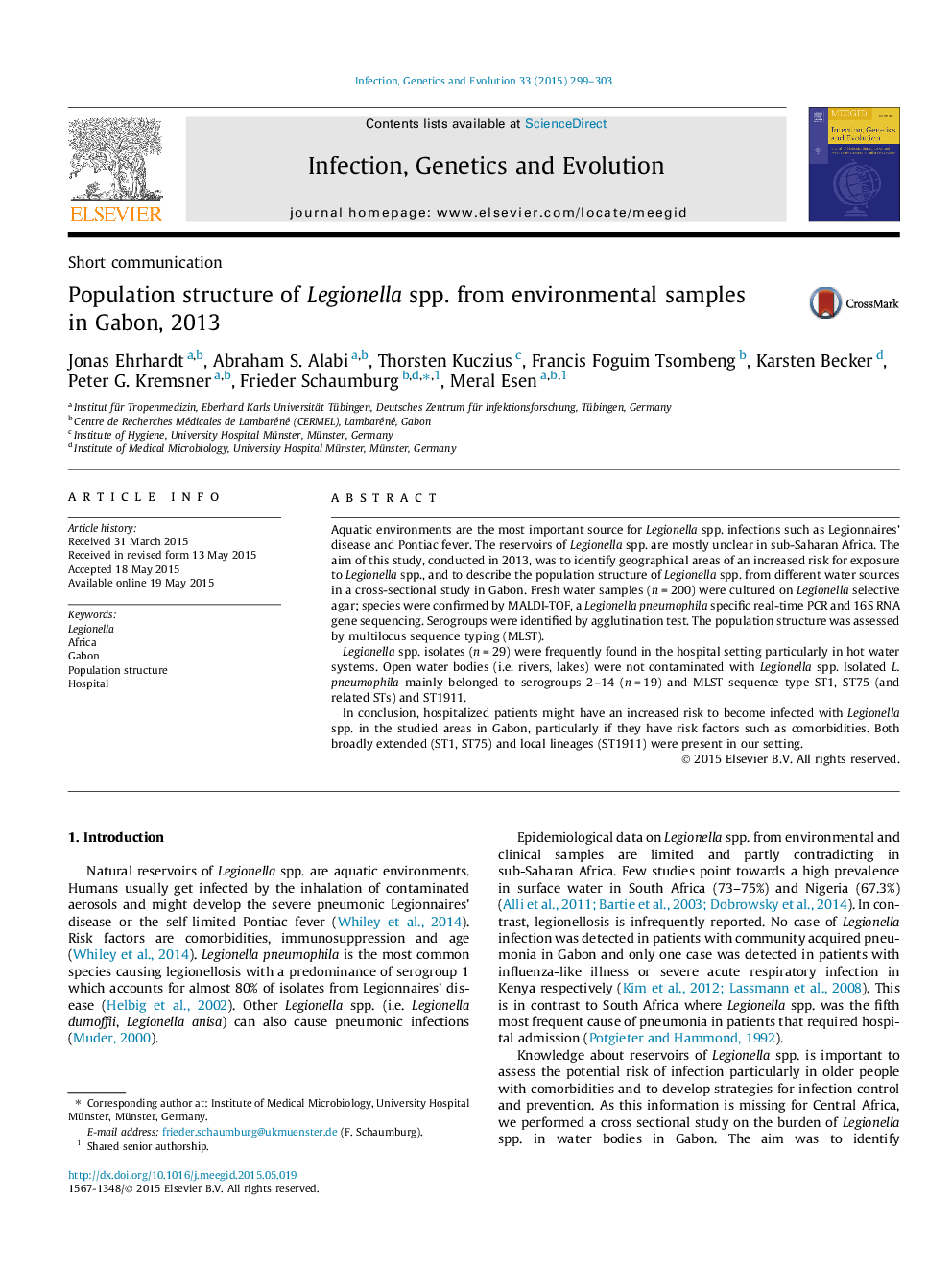| Article ID | Journal | Published Year | Pages | File Type |
|---|---|---|---|---|
| 5908929 | Infection, Genetics and Evolution | 2015 | 5 Pages |
â¢Hot water systems are colonized with Legionella spp. in Gabon, Central Africa.â¢Legionella spp. was rarely detected in open water bodies (i.e. rivers, lakes).â¢L. pneumophila clustered with the pandemic ST1 or a divergent African clade.
Aquatic environments are the most important source for Legionella spp. infections such as Legionnaires' disease and Pontiac fever. The reservoirs of Legionella spp. are mostly unclear in sub-Saharan Africa. The aim of this study, conducted in 2013, was to identify geographical areas of an increased risk for exposure to Legionella spp., and to describe the population structure of Legionella spp. from different water sources in a cross-sectional study in Gabon. Fresh water samples (n = 200) were cultured on Legionella selective agar; species were confirmed by MALDI-TOF, a Legionella pneumophila specific real-time PCR and 16S RNA gene sequencing. Serogroups were identified by agglutination test. The population structure was assessed by multilocus sequence typing (MLST).Legionella spp. isolates (n = 29) were frequently found in the hospital setting particularly in hot water systems. Open water bodies (i.e. rivers, lakes) were not contaminated with Legionella spp. Isolated L. pneumophila mainly belonged to serogroups 2-14 (n = 19) and MLST sequence type ST1, ST75 (and related STs) and ST1911.In conclusion, hospitalized patients might have an increased risk to become infected with Legionella spp. in the studied areas in Gabon, particularly if they have risk factors such as comorbidities. Both broadly extended (ST1, ST75) and local lineages (ST1911) were present in our setting.
